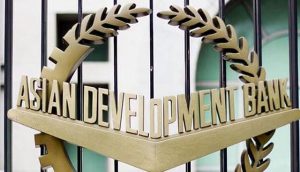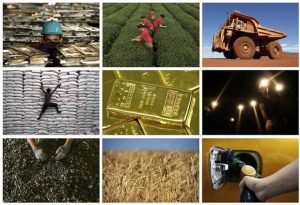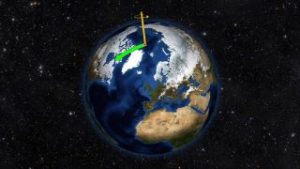Today Current Affairs: 3rd May 2021 for UPSC IAS exams, State PSC exams, SSC CGL, State SSC, RRB, Railways, Banking Exam & IBPS, etc
Table of Contents
Asian Development Outlook (ADO) 2021:

According to the report Asian Development Outlook (ADO) 2021, the second wave of Covid-19 can put India’s economic recovery at “risk”.
- ADO is a series of annual economic reports on the Developing Member Countries (DMCs) of the Asian Development Bank (ADB).
GDP Projections:
For India:
- Gross Domestic Product (GDP) will rebound strongly by 11% in Fiscal Year (FY) 2021-22 due to continued economic recovery boosted by increased public investment, vaccine rollout, and a surge in domestic demand.
- India’s economic growth to moderate to 7% in FY 2022-23.
- The economy is expected to have contracted by 8% in FY 2020-21 in line with the government’s second advance estimate.
For Developing Asia:
- The economic growth is set to rebound to 7.3% in 2021-22. This follows a 0.2% contraction last year.
- Developing Asia comprises 46 members of the ADB list on the basis of the geographic group.
- These include newly industrialized economies, countries in Central Asia, East Asia, South Asia, Southeast Asia, and the Pacific.
- India is also part of Developing Asia.
Core Sector Output::

The eight-core sectors grew by 6.8% in March 2021 (the highest in 32 months), after a 3.8% dip in February, but the spike was largely due to the base effects from March 2020.
- During 2020-21 (April-March), the output of the eight sectors contracted by 7% as against a positive growth of 0.4% in 2019-20.
- About Eight Core Sectors:
- These comprise 40.27% of the weight of items included in the Index of Industrial Production (IIP).
- The eight core sector industries in decreasing order of their weightage: Refinery Products> Electricity> Steel> Coal> Crude Oil> Natural Gas> Cement> Fertilizers.
- Base Effect:
- The base effect refers to the effect that the choice of a basis of comparison or reference can have on the result of the comparison between data points.
- For example, the base effect can lead to an apparent under- or overstatement of figures such as inflation rates or economic growth rates if the point chosen for comparison has an unusually high or low value relative to the current period or the overall data.
- Production of natural gas, steel, cement and electricity jumped 12.3%, 23%, 32.5% and 21.6% in March 2021, as against (-) 15.1%, (-) 21.9%, (-) 25.1% and (-) 8.2% in March 2020, respectively (low base effect).
- Index of Industrial Production:
- IIP is an indicator that measures the changes in the volume of production of industrial products during a given period.
- It is compiled and published monthly by the National Statistical Office (NSO), Ministry of Statistics and Programme Implementation.
- It is a composite indicator that measures the growth rate of industry groups classified under:
Broad sectors, namely, Mining, Manufacturing, and Electricity. - Use-based sectors, namely Basic Goods, Capital Goods, and Intermediate Goods.
- The base Year for IIP is 2011-2012.
Meeting Of Foreign Ministers Of G7 Countries:

External Affairs Minister S Jaishankar will embark on a four-day visit to London to participate in a meeting of foreign ministers of G7 countries. India has been invited to the meeting as a guest country.
- The G-7 or ‘Group of Seven’ are Canada, France, Germany, Italy, Japan, the United Kingdom, and the United States.
- The G-7 nations meet at annual summits that are presided over by leaders of member countries on a rotational basis.
- The summit is an informal gathering that lasts two days, in which leaders of member countries discuss a wide range of global issues.
- The G-7 does not have a formal constitution or a fixed headquarters.
- The decisions taken by leaders during annual summits are non-binding.
- It is an intergovernmental organization that was formed in 1975 by the top economies of the time as an informal forum to discuss pressing world issues.
- Canada joined the group in 1976, and the European Union began attending in 1977.
- The G-7 was known as the ‘G-8’ for several years after the original seven were joined by Russia in 1997. The Group returned to being called G-7 after Russia was expelled as a member in 2014 following the latter’s annexation of the Crimea region of Ukraine.
Relief Measures For Taxpayers Under GST:

In view of the corona pandemic, the government has announced various relief measures for taxpayers under GST law including a reduction in the interest rate and waiving of late fees. The Finance Ministry has issued a notification in this regard.
- A lower rate of interest of 9 percent for the first 15 days from the due date of payment of tax and 18 percent thereafter, for the tax payable for the tax period of March and April 2021 has been notified for registered persons having an aggregate turnover of over 5 crore rupees.
- In case of aggregate turnover up to 5 crore rupees, nil rate of interest for the first 15 days from the due date of payment of tax, 9 percent for the next 15 days, and 18 percent thereafter, for both normal taxpayers and those under Quarterly Return, Monthly Payment of Taxes (QRMP) Scheme for March and April 2021 has been notified.
- For registered persons having aggregate turnover above 5 crore rupees, the late fee has been waived for 15 days with regard to returns in FORM GSTR-3B furnished beyond the due date for tax periods of these two months.
- In case of turnover up to 5 crore rupees, the late fee has been waived for 30 days for GSTR-3B returns furnished beyond the due date.
- Besides, the Finance Ministry has extended the due date of filing FORM GSTR-1 and Invoice Furnishing Facility- IFF for the month of April due in May has been extended by 15 days.
Climate Change Causing Shift In Earth’s Axis:

A study published in Geophysical Research Letters of the American Geophysical Union (AGU) says that due to the significant melting of glaciers because of global temperature rise, Earth’s axis of rotation has been moving more than usual since the 1990s.
- While this change is not expected to affect daily life, it can change the length of the day by a few milliseconds.
Findings from the New Study:
- Since the 1990s, climate change has caused billions of tonnes of glacial ice to melt into oceans. This has caused the Earth’s poles to move in new directions.
- The north pole has shifted in a new eastward direction since the 1990s, because of changes in the hydrosphere (meaning the way in which water is stored on Earth).
- From 1995 to 2020, the average speed of drift was 17 times faster than from 1981 to 1995.
- Also, in the last four decades, the poles moved by about 4 metres in distance.
- The calculations were based on satellite data from NASA’s Gravity Recovery and Climate Experiment (GRACE) mission.
Causes of Polar Drift:
- Ice Melting:
- Change in Non-Glacial Regions (Terrestrial Water Storage):
- Groundwater Depletion:
Xylophis deepaki:

A tiny snake “Xylophis deepaki” has been named in honour of Indian herpetologist Deepak Veerappan for his contribution in erecting a new subfamily Xylophiinae to accommodate wood snakes.
- The common name suggested for the species is ‘Deepak’s wood snake’.
- Xylophis deepaki is a tiny snake of just 20 cm in length with iridescent scales.
- It was first found on a coconut plantation in Kanyakumari.
- It is now reported to be an endemic species of Tamil Nadu and also been sighted in some parts of the southern Western Ghats.
- It is found in the drier regions and in lower altitudes around the Agasthyamalai hills.
State Disaster Response Fund (SDRF)::

The Centre has released the first installment of the State Disaster Response Fund (SDRF) to States, in the wake of the second wave of Covid-19 that has claimed thousands of lives since April 2021.
- Normally, the first instalment is released in June as per the recommendations of the Finance Commission.
- SDRF has been constituted under Section 48 (1) (a) of the Disaster Management Act, 2005.
- It was constituted based on the recommendations of the 13th Finance Commission.
- It is the primary fund available with the State governments for responses to notified disasters to meet the expenditure for providing immediate relief.
- It is audited by the Comptroller and Auditor General of India (CAG) every year.
- The Centre contributes 75% of the SDRF allocation for general category States and Union Territories and 90% for special category States and Union Territories (northeastern States, Sikkim, Uttarakhand, Himachal Pradesh, Jammu and Kashmir).
- The annual Central contribution is released in two equal instalments as per the recommendation of the Finance Commission.
Disaster (s) Covered under SDRF:
- Cyclone, drought, earthquake, fire, flood, tsunami, hailstorm, landslide, avalanche, cloudburst, pest attack, frost and cold waves.
- Local Disasters: A State Government may use up to 10% of the funds available under the SDRF for providing immediate relief to the victims of natural disasters that they consider to be ‘disasters’ within the local context in the State and which are not included in the notified list of disasters of the Ministry of Home Affairs.
World Press Freedom Day:

World Press Freedom Day is being observed on May 3, 2021.
- World Press Freedom Day was proclaimed by the UN General Assembly in December 1993, following the recommendation of UNESCO’s General Conference.
- Since then, 3 May, the anniversary of the Declaration of Windhoek is celebrated worldwide as World Press Freedom Day.
- The objective of the Day: To celebrate the fundamental principles of press freedom, assess the state of press freedom throughout the world, defend the media from attacks on their independence, and pay tribute to journalists who have lost their lives in the line of duty.
- Theme: This year’s theme “Information as a Public Good” serves as a call to affirm the importance of cherishing information as a public good.
SpaceX:

A SpaceX capsule with four astronauts returning from the International Space Station splashed down safely in the Gulf of Mexico on May 2, 2021.
- American Space agency NASA has said that Their return marked the end of 168 days in space for the four astronauts and the end of SpaceX’s first operational round-trip mission.
- This return to earth was the first nighttime splashdown for NASA astronauts since Apollo 8, which was the first mission to orbit the moon, in 1968.
- The mission was part of NASA’s fledgling public-private partnership with SpaceX, the rocket company founded in 2002 by Elon Musk, who is also CEO of electric car maker Tesla Inc.




